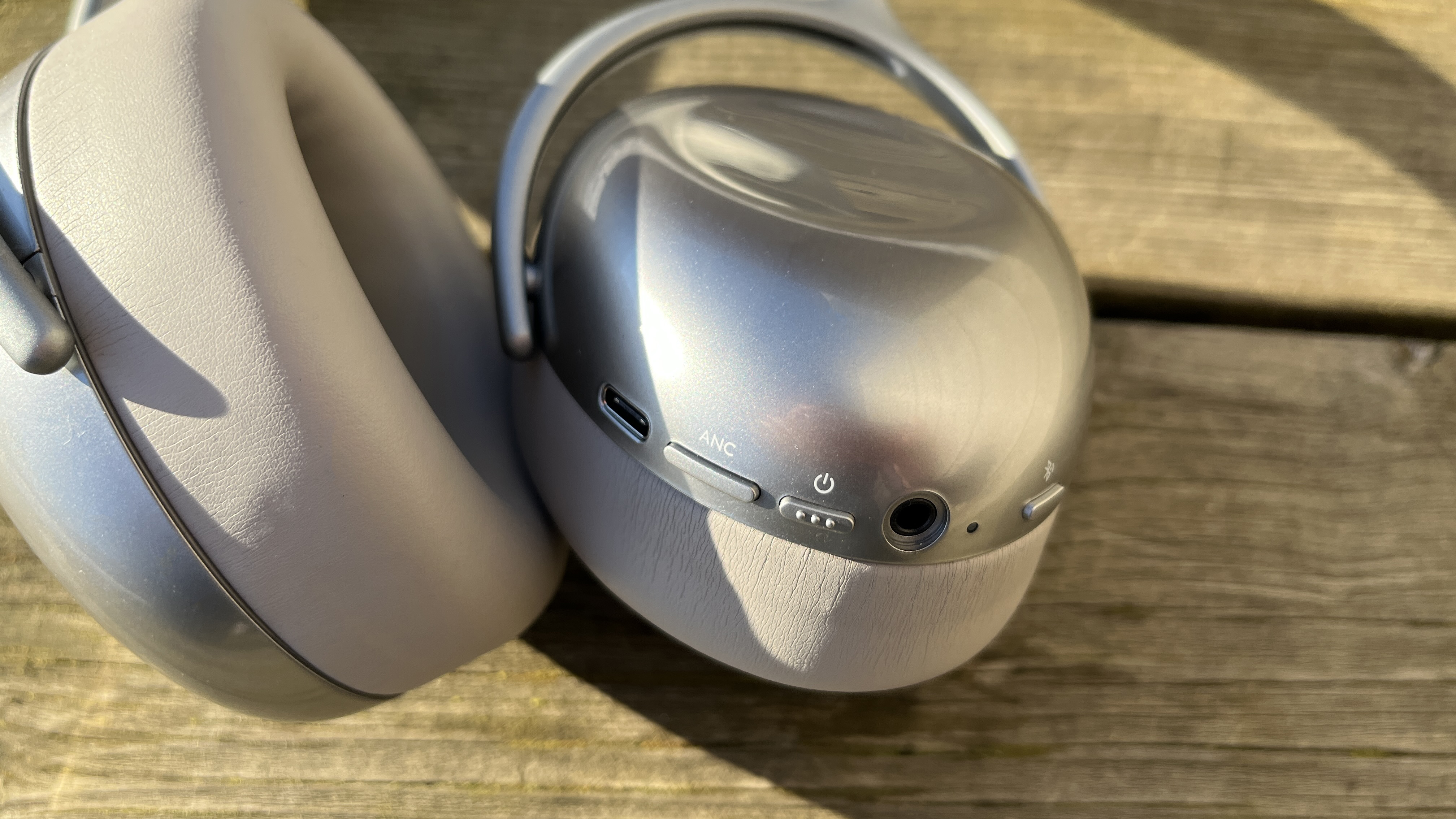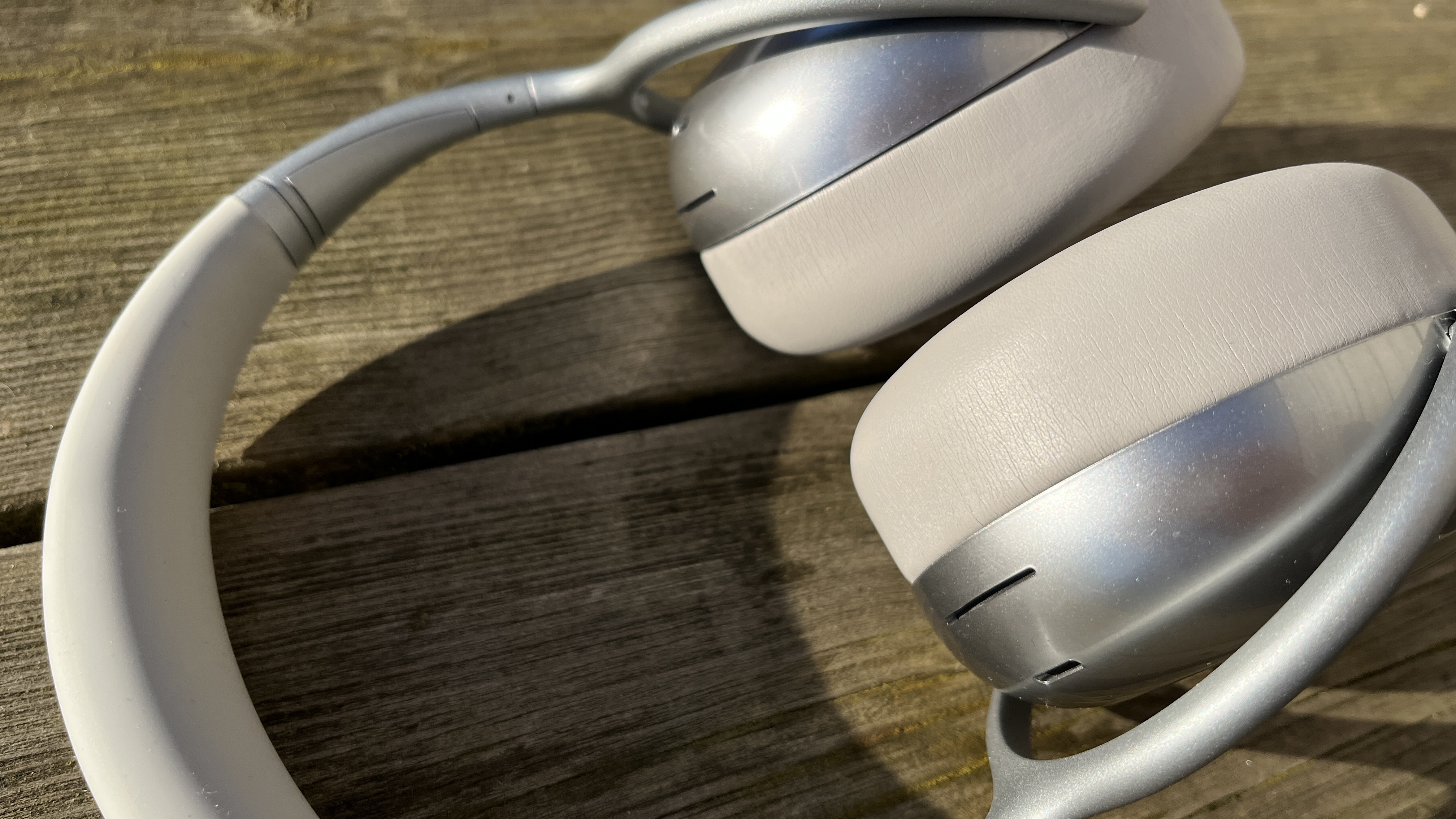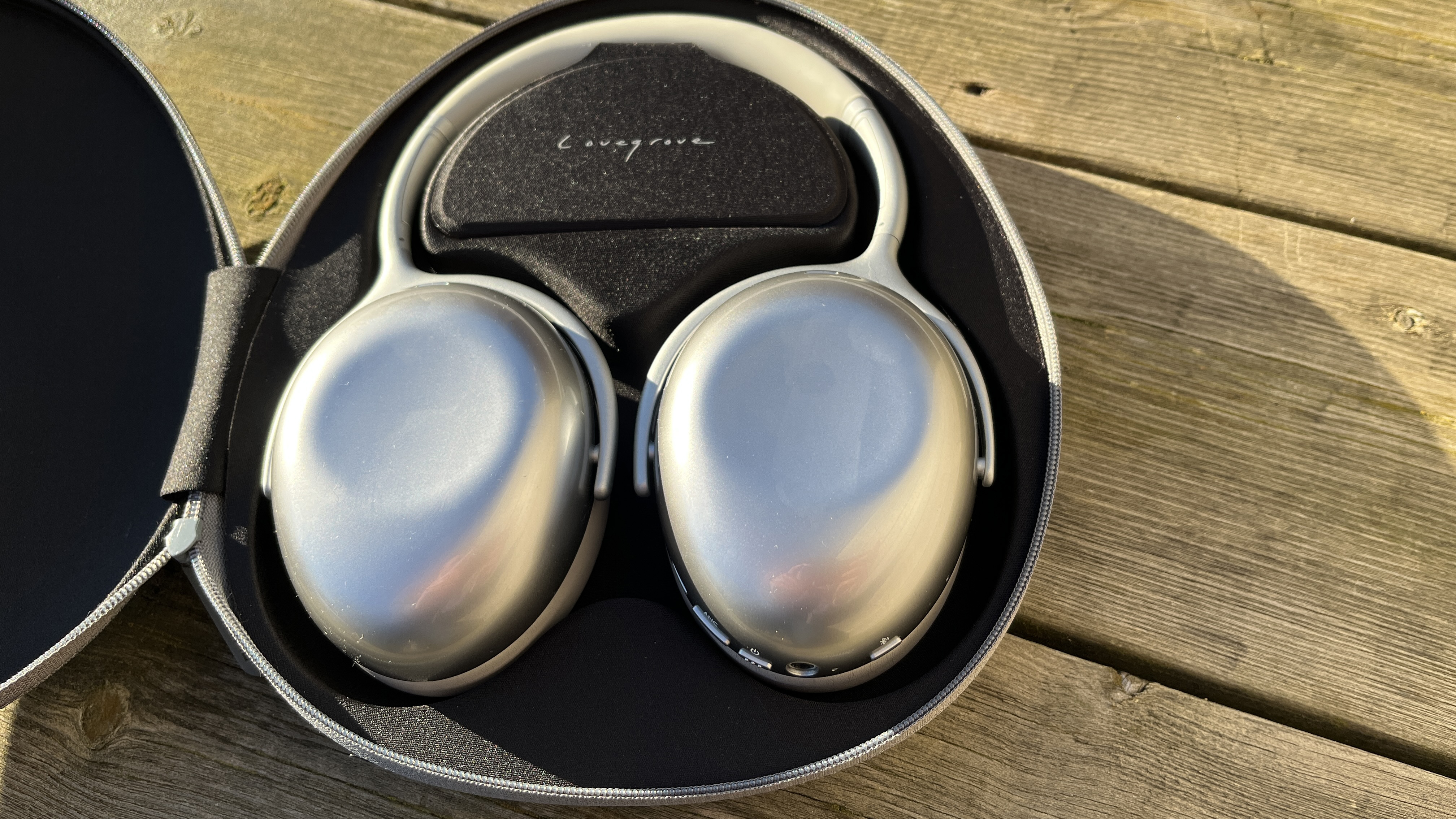KEF Mu7 review: can these headphones compete?
British high-end hi-fi brand turns its attention to noise-cancelling over-ear headphones, but are the Mu7 any good?

There’s plenty to enjoy about the KEF Mu7. But they have a quite specific sonic stance, are prepared to let on about how hard they’re working to cancel that external noise, and are short of control options. In an area of the market as fearsomely competitive as this is, what might usually be considered fairly minor shortcomings are enough to comprehensively scupper a product’s chances.
-
+
Expansive, detailed and overtly ‘hi-fi’ sound
-
+
Good battery life and wireless connectivity specification
-
+
(Mildly) individual looks
-
-
Not fans of rougher and/or readier recordings
-
-
Active noise-cancelling (ANC) isn’t implemented perfectly
-
-
Isn't app and voice control obligatory for products like this?
Why you can trust T3

From globe-straddling behemoths like Bose and Sony to altogether more specialist or boutique concerns like Bowers & Wilkins, Focal and Montblanc, it seems everyone wants to sell you a pair of the best wireless active noise-cancelling over-ear headphones.
So why not KEF? After all, the British loudspeaker specialist certainly has credibility on its side. But given the strength and straightforward numerousness of the competition, a little more than ‘credibility’ (no matter how hard-won) is required to make a dent in consumer consciousness. Does the KEF Mu7 have what it takes to crash a party that’s already over capacity? Here's our in-depth review...
KEF MU7: Price & Release Date
The KEF Mu7 wireless active noise-cancelling over-ear headphones are on sale now, and in the United Kingdom they’ll set you back £349 a pair. In the United States they’re priced at $399, while in Australia you’re looking at AU$539 or so.
This, it hardly needs stating, is right in the thick of the ‘premium over-ear wireless ANC headphones’ action. Sony’s acclaimed WH-1000XM5, the snappily named Noise-Cancelling Headphones 700 by Bose, Sennheiser’s Momentum 4 and the PX7 S2 by Bowers & Wilkins all sell for similar money… we could go on, but the broad point is already made: the KEF Mu7 have it all to do in an area of the market where ‘pretty good’ is seldom good enough.
KEF Mu7 review: Features & What's New?

The Mu7 use Bluetooth 5.1 for wireless connectivity. There’s compatibility with SBC, AAC, aptX and aptX HD codecs - so high-resolution audio up to a 24bit/48kHz standard is available. Make a wired connection, of course, and as long as the best DAC or headphone socket you’re plugged into can manage it then playback of a still higher resolution is possible.
No matter how you get the audio information on board, though, it’s delivered to your ears via a couple of 40mm full-range dynamic drivers. KEF is claiming a frequency response of 20Hz - 20kHz, which is a) about par for the course and b) plenty.

Battery life is a perfectly respectable 40 hours from a single charge of the 1100mAh lithium-ion battery, and that’s with ANC switched on and a wireless connection made. Just a 15 minute charge via USB-C is sufficient to keep the Mu7 playing for another eight hours. And unlike quite a few rivals we could mention, KEF’s figures are all completely realistic.
Get all the latest news, reviews, deals and buying guides on gorgeous tech, home and active products from the T3 experts
The active noise-cancellation (ANC) operates in three modes. Or, rather, it operates in two modes - because the third mode is ‘off’. Otherwise you can choose from ‘on’ or ‘smart ANC’ - this last one attempts to assess your surroundings on the fly and targets both specific frequencies and the overall level of noise-cancellation to suit.
As well as monitoring your environment, the array of mics fitted to the Mu7 is available for voice calls. KEF has specified proven 'cVc technology' in an effort to make call quality as clear and intelligible as possible.
KEF Mu7 review: Performance

The way any piece of audio equipment sounds is ultimately a judgement call. Someone (or some group of people) has decided on the ‘voice’ a pair of headphones (for instance) is going to have, and then fingers are crossed as to whether or not it finds favour. In the case of the KEF Mu7, it’s not difficult to picture the wish-list: five minutes inside these headphones and words like ‘judicious’, ‘precise’ and ‘mature’ all start to muscle their way to the front of the mind…
Given some appropriate content of appropriately sizable resolution to deal with, there’s plenty to like - admire, even - about the sound the Mu7 make. They have scale on their side, for a start-off - even intimate, minimal recordings sound widescreen and quite expansive. And they retain and reveal an impressive amount of detail, too - even the more fleeting events in a recording, the attack and decay of the highest-frequency, shortest-wave sounds, are identified and described.
Everything that occurs does so on a generous, well-organised and entirely believable soundstage, and the Mu7 pull off the by-no-means easy trick of offering good separation and decent focus at the same time. There’s a fair sense of unity and togetherness to the sound the KEF deliver.
There’s not a huge amount of extension or, more accurately, presence to the low frequencies the Mu7 generate, though. Bass sounds are reasonably well controlled where entry into and exit from individual hits and/or notes are concerned, and those detail levels are as high here as anywhere else - but the low-end is relatively short of substance and body.

So in relative terms the KEF push rather than punch, and don’t create quite the sense of momentum or rhythmic positivity that other, more assertive, designs can achieve. And when you realise the Mu7 aren’t the most dynamic headphones around when it comes to putting appreciable distance between ‘quite quiet’ and ‘extremely loud’ is concerned, it becomes apparent the KEF can sound slightly undemonstrative and matter-of-fact when compared to their most capable price-appropriate rivals.
They’re rather more adept at identifying the harmonic dynamics present in a solo instrument or an unaccompanied voice, though, and do good work in making them apparent without getting all prissy about it. The Mu7 are quite convincing where tonality is concerned, too - even though their low-end reproduction in particular is trying hard not to give offence, it’s tonally natural and neutral.
‘Inoffensive’ isn’t always the most positive trait, though - it’s the unlovely flip-side to ‘grown-up’ or ‘mature’, and it’s an especially unhelpful stance to adopt when the music you want to listen to is trying with all its heart to be offensive or otherwise get all up in your face. The KEF just aren’t comfortable with anything they deem too attacking, too delinquent or too cheap-sounding - they can’t summon the conviction necessary to hand it over with its attitude intact. Or, more correctly, they prefer ‘judicious’ and ‘mature’ to ‘angsty’ and ‘raucous’. And there’s every chance you might too… but we prefer our premium headphones to be a little more adaptable and/or agnostic than the KEF Mu7 seem to be.
The two-stage ANC is just as effective as the sound-reproduction itself is - and yet it’s somehow just as imperfect. Switch ANC ‘on’ or active ‘smart ANC’ and there’s no two ways about it: ambient sound is reduced a great deal, to the point that only the loudest or most nearby sounds are likely to impact on your listening pleasure. But both positions alter the sonic signature of the Mu7 just a touch, dulling off the last bit of shine and bite from the top of the frequency range. And the noise-cancellation circuitry introduces a very mild, yet undeniable, sensation of ‘cabin pressure’ or ‘sinus blockage’ when it’s activated, too - and it’s been a while since we’ve heard a pair of active noise-cancelling headphones that do this to any noticeable degree.
KEF MU7 review: Design & usability

For the design of the Mu7, KEF has enlisted the services of long-time collaborator Ross Lovegrove. Anyone familiar with this work for the company, from the huge Muon loudspeakers to the grabbable Muo wireless speaker, will know what to expect here (beyond a model name that starts ‘Mu’) - the Mu7 are an organically flowing combination of bumps and recesses. Or, at least, they are as far as the earcups are concerned - that’s about the only area of a pair of over-ear headphones that doesn’t have its form utterly dictated by its function.
Which means that aside from the aluminium earcups, the rest of the KEF are unremarkable where design is concerned. Faux-leather covered memory foam forms the earpads, and there’s more of the material covering the central part of the headband. The rest of the headband, the arms and the yokes are aluminium too, and the earcups fold flat to allow the KEF-branded sem-rigid carry case to be of manageable size.
At 309g the Mu7 are neither especially light nor especially heavy, but the headband and hanger arrangement allows them to stay comfortable for a good long while. Certainly longer than it takes for the earpads to get your ears nice and toasty, anyhow. There are a couple of finishes available: the ‘silver grey’ of our review sample and ‘charcoal grey’ (which is, to all intents and purposes, black).

As far as control is concerned, options are rather restricted by prevailing standards. In terms of physical controls, the right earcup is doing all the work: arranged around the edge of its aluminium section there’s a USB-C input for charging the battery, a button to cycle through your trio of noise-cancellation options, a power on/off button, a Bluetooth pairing button, and a 3.5mm analogue socket. KEF provides a couple of nicely branded cables in the carry-case: one is USB-A to USB-C, the other 3.5mm to 3.5mm. There’s also a flight adapter in there too. With a 3.5mm connection to a source made, the Mu7 can be used without being powered up - unless you want to use ANC at the same time, of course.
The bumpy surface of the right earcup is where the touch-controls are integrated. Volume up/down, skip forwards/backwards and play/pause are all available, as well as all the relevant telephony controls, and all are reliable and responsive. A long press on the ANC button enables or disables this touch-surface.
Each earcup has a couple of cutaways near the top that act as mic openings. The right earcup also has a smaller mic opening towards the bottom, and there’s also a little LED down here too - it lets you know what’s what regarding charging, pairing, power status and so on.
That’s your lot. Every price-comparable rival we’ve invoked (and quite a few more affordable alternatives we haven’t) will offer you a control app of lesser or greater comprehensiveness - but there’s no KEF equivalent. And unlike a great many alternatives, the Mu7 aren’t compatible with voice control either.
KEF MU7 review: Verdict

That the attitude of the KEF Mu7 will find favour with any number of listeners seems assured. They’re a full-scale, detailed and quite insightful listen, after all.
But once out of their comfort zone they can sound a little flustered, and they’re by no means flawless when it comes to noise-cancelling.
Add in the relative lack of control options, and it becomes apparent you’ll have to be very keen indeed on those ‘designer’ earcups to put the Mu7 near the top of your shortlist.
Also consider
Like the KEF Mu7, the Bowers & Wilkins Px7 S2 are the product of a venerable British loudspeaker firm. Unlike the Mu7, though, the Px7 S2 are more than happy to give it their best shot no matter the sort of music you like to listen to - and while they’re hardly Bose when it comes to active noise-cancellation, they are at least consistent in their sound whether ANC is on or off.
Simon Lucas is a freelance technology journalist and consultant, with particular emphasis on the audio/video aspects of home entertainment. Before embracing the carefree life of the freelancer, he was editor of What Hi-Fi? magazine and website – since then, he's written for titles such as Wired, Metro, the Guardian and Stuff, among many others. Should he find himself with a spare moment, Simon likes nothing more than publishing and then quickly deleting tweets about the state of the nation (in general), the state of Aston Villa (in particular) and the state of his partner's cat.
